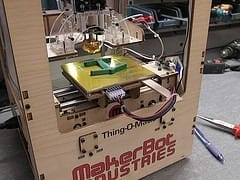“Now hardware is almost as cheap as software.”
In recent years, Silicon Valley seems to have forgotten about silicon. It’s been about dot-coms, Web advertising, social networking and apps for smartphones.
But there are signs here that hardware is becoming the new software.
It is an expansion of a trend that began a few years ago with the Flip videophone, a sleeper hit, and has recently accelerated with Nest, the smart thermostat; Lytro, a camerathat refocuses a photo after it is taken; and the Pebble smartwatch, a wristwatch that can interact with a smartphone.
Although the hardware is not manufactured in Silicon Valley, it is being conceived, designed, prototyped and financed here, usually by small start-ups.
What has changed? Each of those steps is speeding up, which cuts the costs and lowers the risks of developing new things.
It’s not that software is any less important in Silicon Valley. One reason for the rise of hardware is that it is now so tightly integrated with software. Apple has taught a generation of product designers that an electronic device isn’t much without specially designed software that makes it a joy to use.
Instead, any designer now has the ability to quickly experiment with new product designs using low-cost 3-D printers. These printers can churn out objects to make prototypes quickly — a fork, wall hooks, mugs, a luggage clasp — by printing thousands of layers of wafer-thin slices of plastics, ceramics or other materials. Products can be made quickly in contract assembly plants overseas, usually in China.
All of this has given designers and engineers a fast-forward button advancing this technological flip-flop.
“Something that once took three months to make now takes less than a month,” explained Andre Yousefi, co-founder of Lime Lab, a product development firm based in San Francisco that works with start-ups to create hardware products. “With 3-D printers, you can now create almost disposable prototypes,” he said. “You queue it up at night, pick it up in the morning and can throw it away by 11 a.m.”
The rapidly falling cost of building computer-based gadgets has touched off a wave of innovation that is starting to eclipse the software-driven world that came to dominate the Valley in the dot-com boom of the late 1990s.
via The New York Times – NICK BILTON and JOHN MARKOFF
The Latest Streaming News: Hardware Renaissance updated minute-by-minute
Bookmark this page and come back often
Latest NEWS
Latest VIDEO








